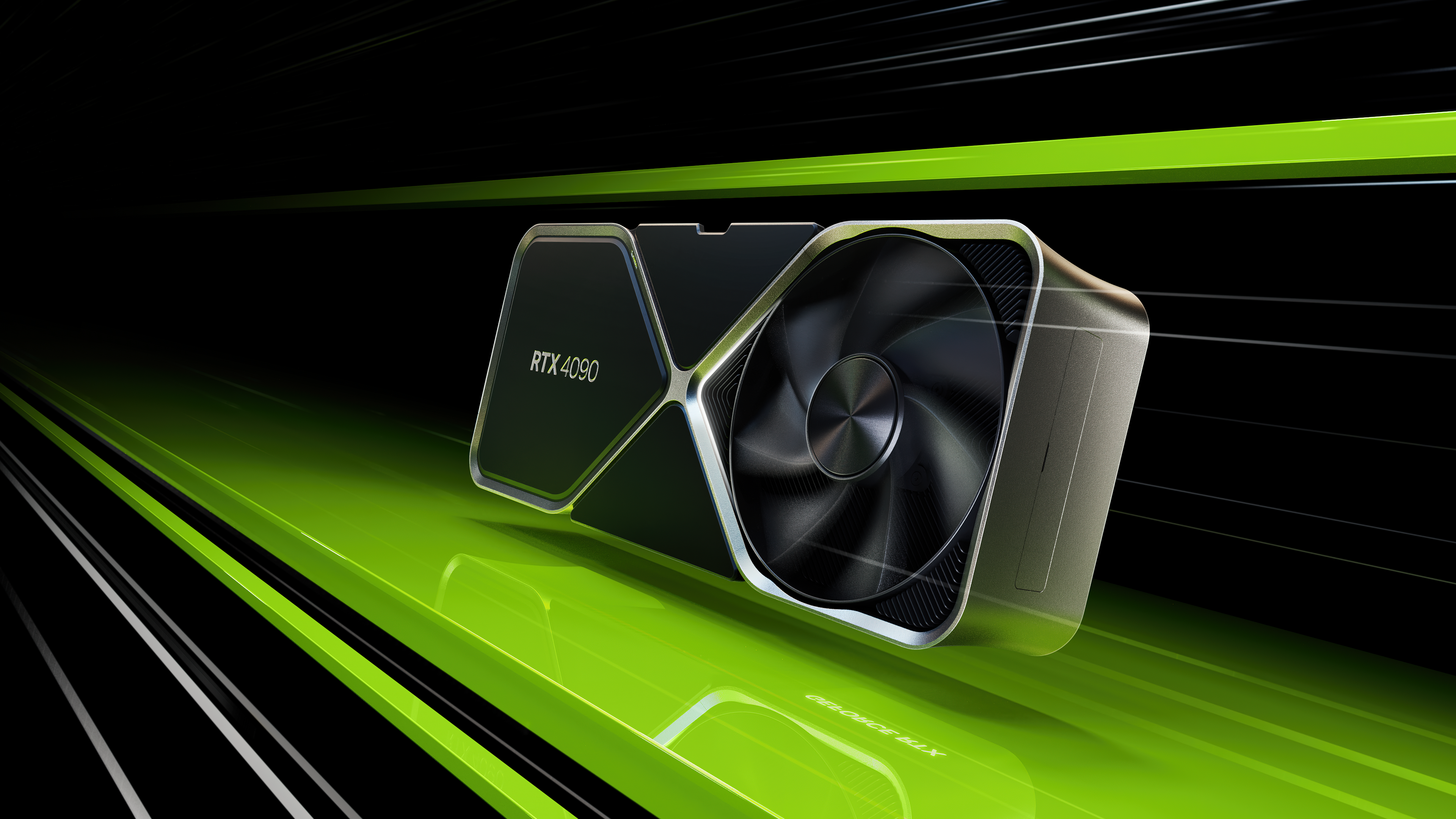 INFRA
INFRA
 INFRA
INFRA
 INFRA
INFRA
Nvidia Corp. announced a pair of extremely powerful graphics cards at its virtual GTC 2022 conference today, promising big steps forward in terms of performance and energy efficiency with artificial intelligence-powered graphics.
The Nvidia GeForce RTX 4090 and RTX 4080 are based on the company’s new Ada Lovelace architecture, which was described by Nvidia Chief Executive Jensen Huang as a “quantum leap” for gaming.
The two graphics cards notably feature 76 billion transistors, providing more performance in a smaller package. They also support an updated version of the company’s Deep Learning Super Sampling technology, which uses AI to enhance the fidelity and performance of specific games. At the event, Huang said the RTX 4090 will provide up to four times the performance of Nvidia’s current high-end graphics card, the RTX 3090 Ti.
Nvidia said the GeForce RTX 4090 packs 24 gigabytes of GDDR6X memory, along with 16,384 CUDA cores, up from 10,496 in the RTX 3090. It also has a base clock speed of 2.23 gigahertz, and can overclock at 2.52 gigahertz. Other specifications include 1,321 Tensor-TFLOPS, 191 Ray Tracing-TFLOPS and 83 Shader-TFLOPS. What all this means is that the RTX 4090 can consistently enable 4K resolution gameplay at over 100 frames per second.
The RTX 4080 meanwhile will be available with a choice of two different memory configurations, and this will likely have a big impact on the overall performance. They include a 12-gigabyte GGR6X model and a 16-gigabyte GDDR6X version that packs considerably more punch. Although neither is as powerful as the RTX 4080, both should be able to display higher fidelity graphics with more realistic lighting while improving power efficiency, Nvidia said.
Other improvements include new hardware features such as real-time path tracing, which is a more advanced form of ray tracing that better simulates the natural path of light. That’s done by bouncing back on a single pixel in random directions, Nvidia explained, resulting in a more faithful reproduction of light and more lifelike graphics.
While both the RTX 4090 and RTX 4080 pack considerable processing power, the upgraded DLSS 3 tech may be the most significant upgrade. Accordion to Huang, DLSS 3 is able to generate additional frames of gameplay separately from the game, enabling the graphics processing unit to boost frame rate and performance even if the central processing unit has been maxed out. These new optimizations were showcased at the event using “Microsoft Flight Simulator 2020,” one of the most resource-intensive games money can buy. During the demo, the game ran smoothly in 4K resolution at extremely high frame rates in the busiest areas.
It’s not only gamers that will benefit. Nvidia said the RTX 40 series graphics cards will also provide a better experience for creators. For instance, 3D artists will be able to render fully ray-traced environments with more accurate physics and realistic materials, and view changes in real time. Meanwhile, video editing and livestreaming will benefit from the improved GPU performance and the addition of two new, eighth-generation AV1 encoders.
Nvidia said the Ada Lovelace architecture also features third-generation RT cores that greatly improve in-game lighting. This is enabled by two new hardware units — the Opacity Micromap Engine that double’s ray-tracing performance — and the Micro-Mesh Engine that helps to boost geometric coverage without impacting performance or storage.
The GeForce RTX 4090 will go on sale next month with a high price tag of $1,599, while the RTX 4080 cards will launch in November priced at $899 for the 12-gigabyte version and $1,199 for the 16-gigabyte model.
THANK YOU